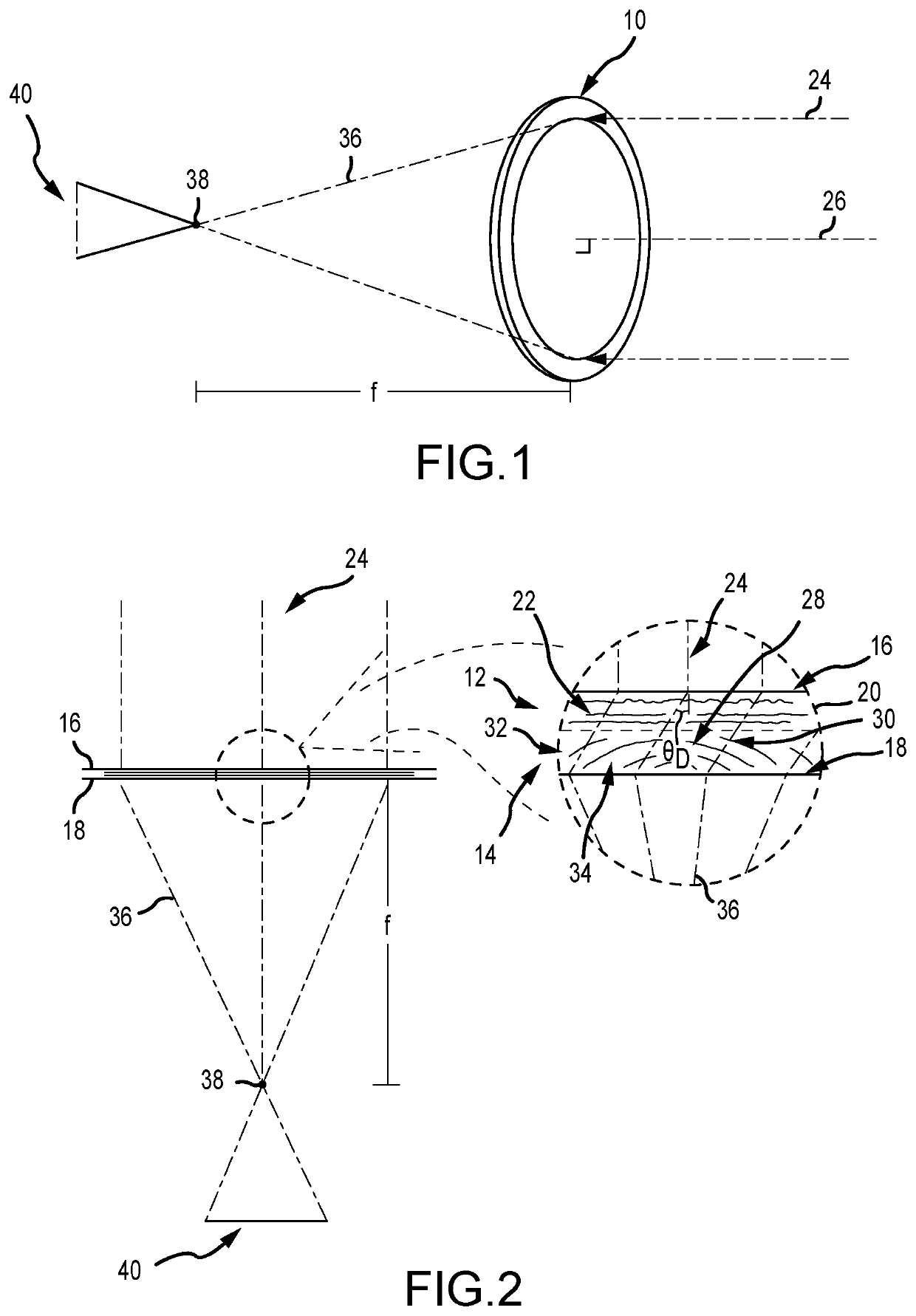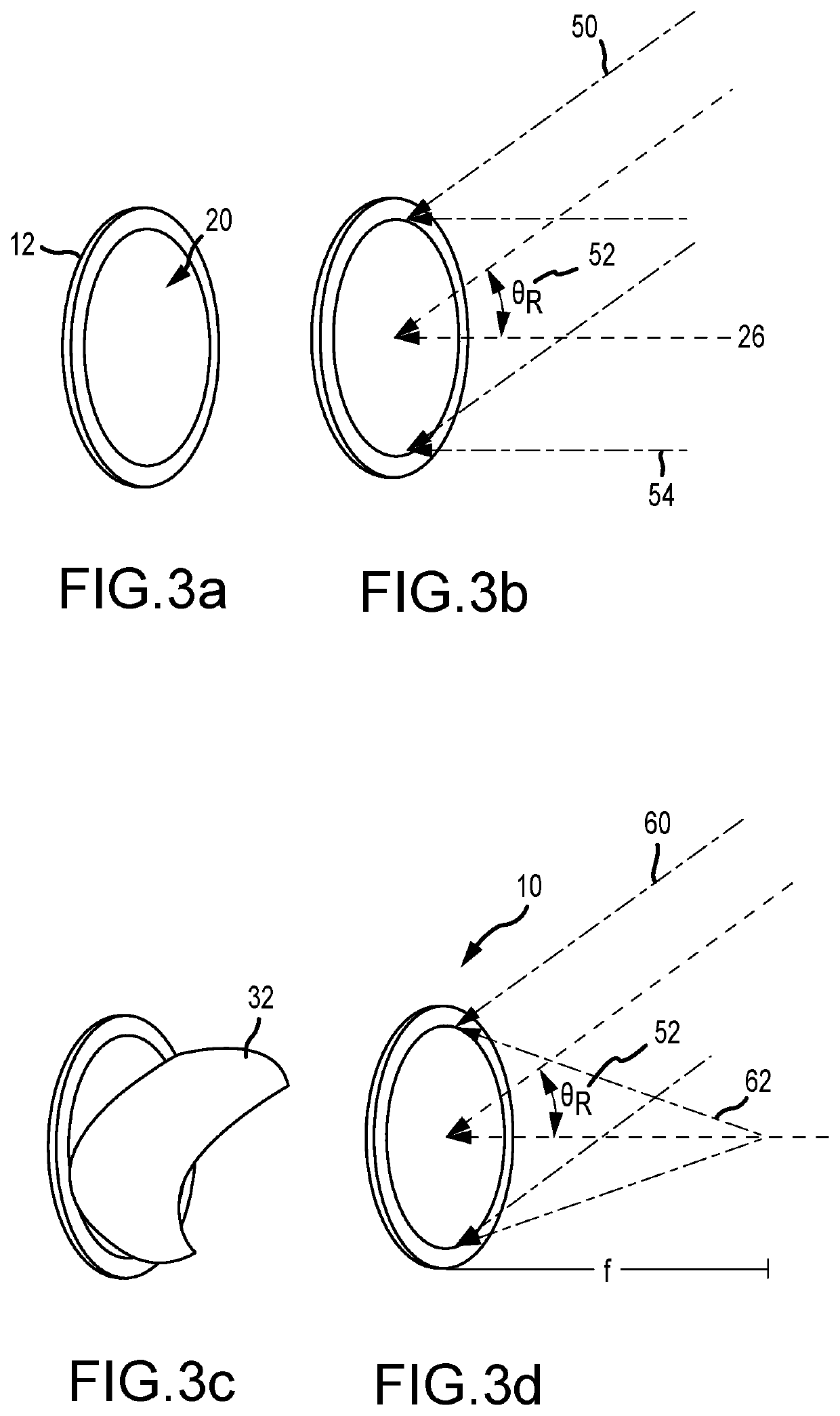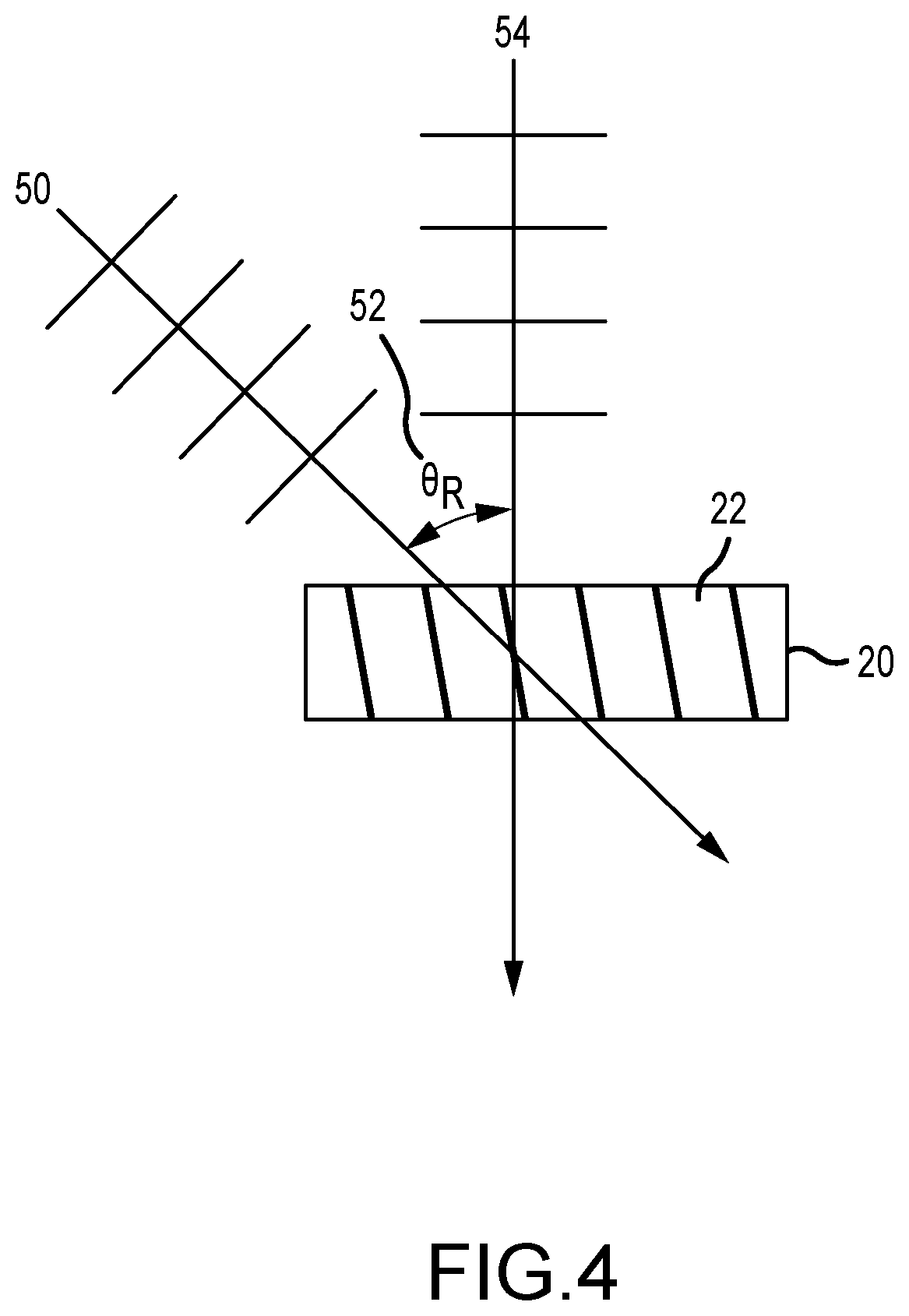Volume holographic optical elements for imaging with reduced aberrations
a holographic optical element and aberration reduction technology, applied in the field of volume holographic optical elements, can solve the problems of chromatic aberration, low diffraction efficiency, and current embodiments of vhoes, and achieve the effects of reducing chromatic aberration and astigmatism, high diffraction efficiency, and high diffraction efficiency
- Summary
- Abstract
- Description
- Claims
- Application Information
AI Technical Summary
Benefits of technology
Problems solved by technology
Method used
Image
Examples
Embodiment Construction
[0036]This invention describes the design and fabrication of two types of VHOEs (transmission and reflection) that can be used in traditional imaging and other applications. These VHOE provide high diffraction efficiency with minimal aberrations and can be used for imaging at one or more wavelengths in applications such as telescopes, image projection, and other optical systems. The VHOE lenses provide optical power (magnification) within the bandwidth centered relative to several wavelengths and is transparent for the rest of the image spectrum. The size of each bandwidth can be controlled by proper choice of VHOE parameters in order to keep the lens aberrations within acceptable range. Each bandwidth may be narrowband (10 nm). These concepts are further extended to create VHOEs that operate with high diffraction efficiency at multiple wavelengths (colors) with each wavelength having a separate bandwidth. These VHOEs can be used in a significant number of applications which employ ...
PUM
 Login to View More
Login to View More Abstract
Description
Claims
Application Information
 Login to View More
Login to View More - R&D
- Intellectual Property
- Life Sciences
- Materials
- Tech Scout
- Unparalleled Data Quality
- Higher Quality Content
- 60% Fewer Hallucinations
Browse by: Latest US Patents, China's latest patents, Technical Efficacy Thesaurus, Application Domain, Technology Topic, Popular Technical Reports.
© 2025 PatSnap. All rights reserved.Legal|Privacy policy|Modern Slavery Act Transparency Statement|Sitemap|About US| Contact US: help@patsnap.com



